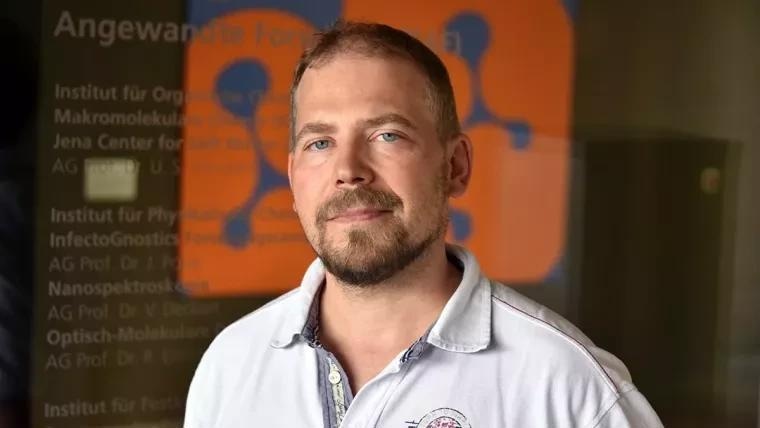Researchers from Friedrich Schiller University Jena and Friedrich Alexander University Erlangen-Nuremberg have achieved a significant breakthrough by creating nanomaterials through a “bottom-up approach.”

Prof. Dr. Felix Schacher at the Institute for Organic Chemistry and Macromolecular Chemistry at the University of Jena. Image Credit: Anne Günther (University of Jena)
Their findings, published in the scientific journal ACS Nano, leverage the phenomenon that crystals tend to grow in specific directions during crystallization. This unique approach has yielded nanostructures characterized as “worm-like and decorated rods” with promising potential for diverse technological applications.
“Worm-Like Nanostructures”
Our structures could be described as worm-like rods with decorations. Embedded in these rods are spherical nanoparticles; in our case, this was silica. However, instead of silica, conductive nanoparticles or semiconductors could also be used—or even mixtures, which can be selectively distributed in the nanocrystals using our method.
Felix Schacher, Professor, Friedrich Schiller University
The wide range of potential applications in science and technology includes fields such as information processing and catalysis.
Understanding and Controlling the Formation Process
“The primary focus of this work was to understand the preparation method as such,” details the chemist. In the production of nanostructures, there are typically two distinct approaches. The first involves the reduction of larger particles to nanometer dimensions through processes like grinding. The second approach entails constructing the nanostructures by assembling smaller components together.
“We wanted to understand and control this building-up process,” Schacher elaborates. To achieve this, the research team utilized individual silicon dioxide particles, commonly referred to as silica. They incorporated chain-like polymer molecules, effectively creating a protective shell around these silica particles.
Directional Crystal Growth
One could imagine it like hairs on a sphere. These hairs are made of a material called ‘poly-(isopropyl-oxazoline)’. This substance crystallizes when heated. And that's the idea of our method: crystals almost never grow in all directions simultaneously but prefer a particular direction. This is known as anisotropy. Thus, we were able to grow our nanostructures deliberately.
Felix Schacher, Professor, Friedrich Schiller University
In the course of this process, the research team stumbled upon a fascinating phenomenon. “For the polymer to crystallize, it requires tiny amounts that are not bound to a particle surface but are freely present in the reaction solution, acting as a sort of glue. We found out that the required amounts are so small that they are barely detectable. But they are needed,” he adds.
Strong Collaboration
Schacher expresses notable enthusiasm about the exceptional collaboration that enabled this research to come to fruition. “Without the excellent cooperation with Prof. Michael Engel from the University of Erlangen, this work would not have been accomplished,” notes the scientist from Jena.
With the help of computer simulations that depicted behavior across multiple scales, we were able to intricately resolve the complex molecular processes underlying the formation of the nanostructures. This was an exciting challenge.
Michael Engel, Professor, University of Erlangen
“We had the opportunity to participate together in a program of the Kavli Institute for Theoretical Physics (KITP) at the University of California in Santa Barbara earlier this year. During this workshop, we jointly wrote this manuscript. The underlying experiments had of course been conducted beforehand—partially within the framework of the collaborative research center TRR 234 ‘CataLight’ funded by the German Research Foundation. But the inspiring atmosphere of the workshop gave us the necessary momentum to complete the work,” the researchers concluded.
Journal Reference
Nabiyan, A., et al. (2023). Self-Assembly of Core–Shell Hybrid Nanoparticles by Directional Crystallization of Grafted Polymers. ACS Nano. doi.org/10.1021/acsnano.3c05461.